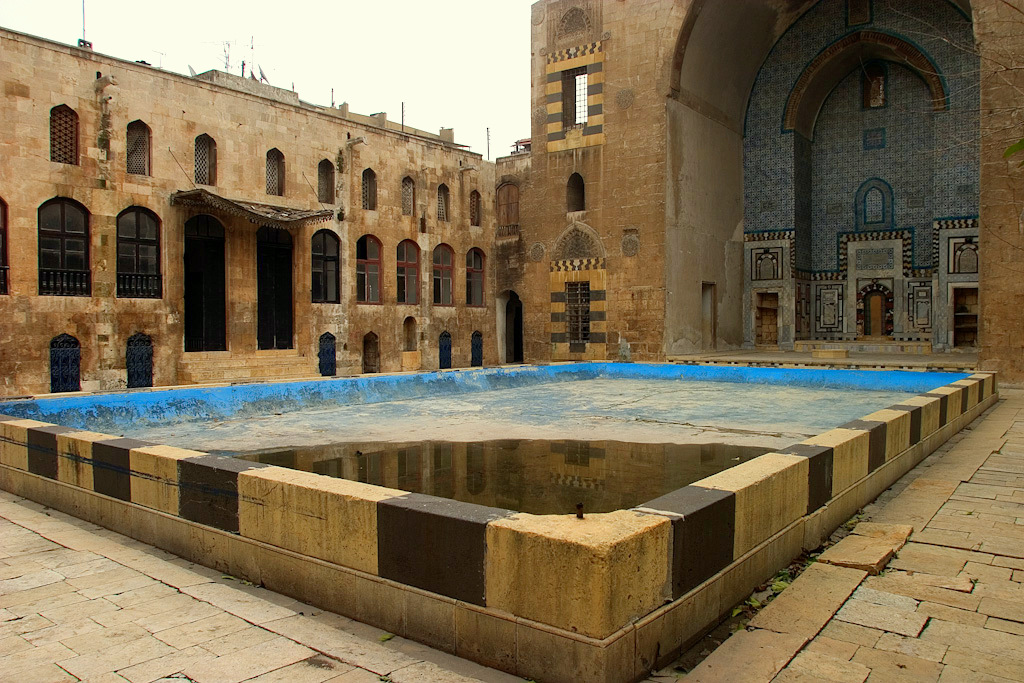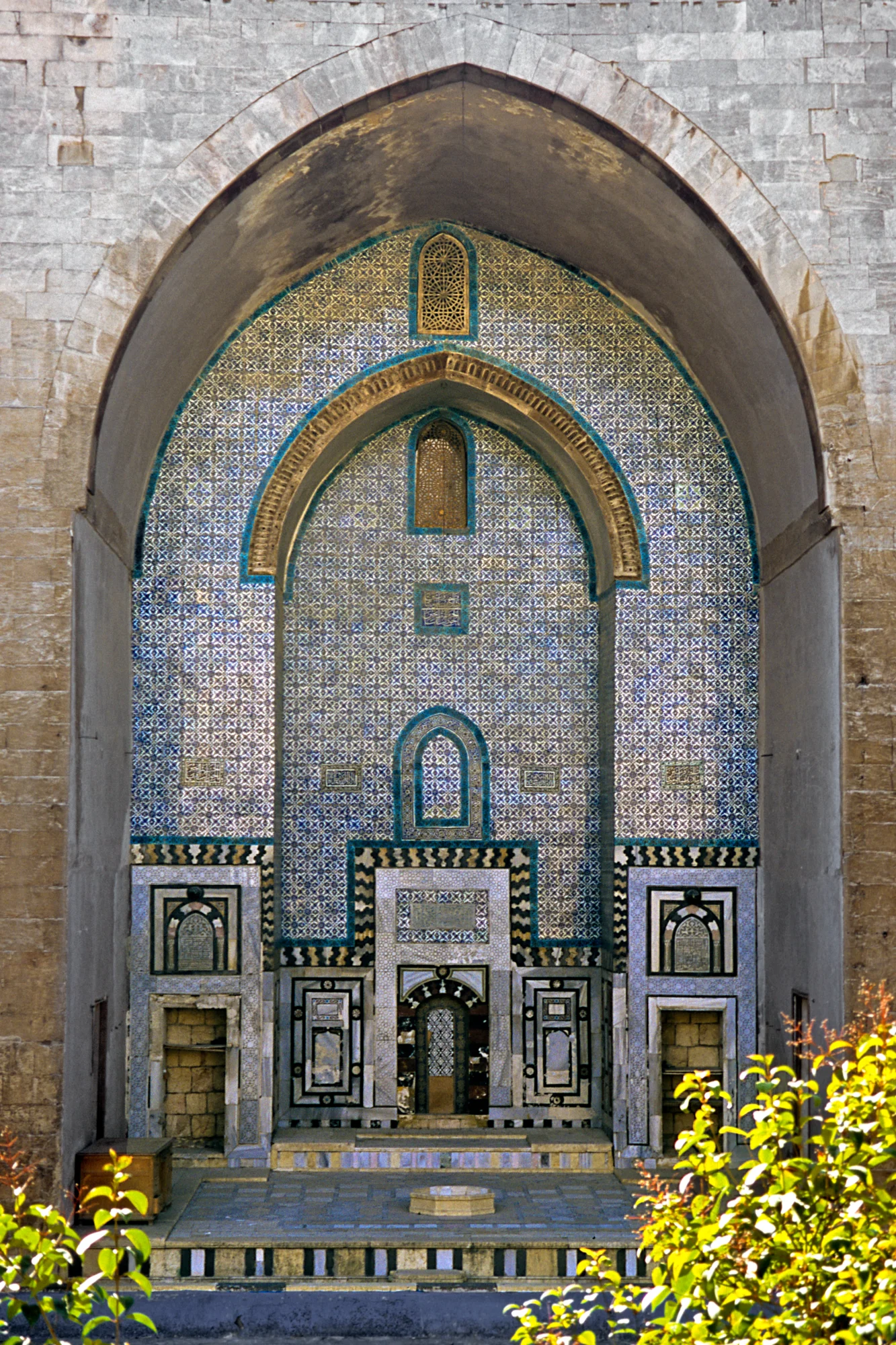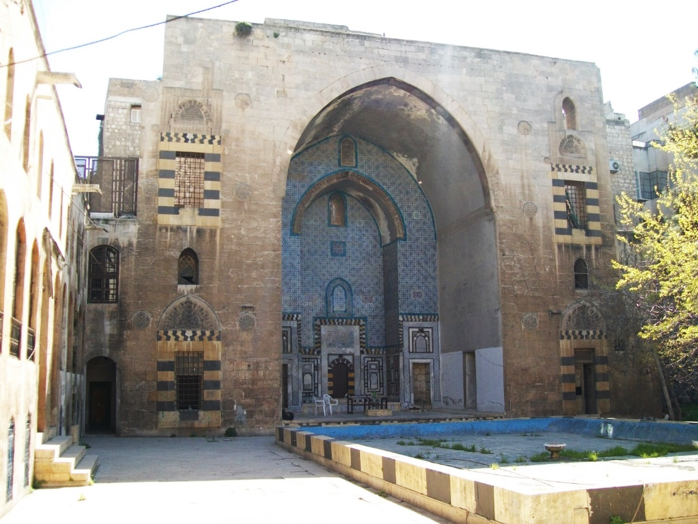This landmark stands as one of Aleppo’s most prominent historical sites and is regarded as one of the finest examples of 16th-century Ottoman residential architecture. Located in the Bandara neighborhood near Bab al-Nasr, the palace once belonged to Hussein Pasha Jan Boulad, a Kurdish prince from the Jan Boulad family. Its courtyard, paved with Ablaq marble, is framed by floral arrangements. At its center lies a leafy pond shaped like a hollow laurel leaf, while Aleppo’s largest iwan dominates the space, adorned with intricate Kashani motifs. The iwan is preceded by a stunning wooden terrace, embellished with leafy carvings and wide arches that provide privacy for the palace’s women. The ceiling of the upper hall, crafted in the “Alfato” style, is intricately carved and engraved, then gilded with gold and lapis lazuli. It bears a verse by Al-Safi Al-Halabi, contemplating themes of strangeness and encounter. The house remained inhabited by the family’s descendants until the 1940s, when it was repurposed as a consulate. Many of its original furnishings have been preserved, including shell-inlaid cabinets, Damascene mirrors, and a finely crafted ivory-inlay table. In 2007, the Directorate of Antiquities undertook restoration efforts. Hidden steel cables were installed to prevent the ceiling from bowing, while the marble floors were treated with lime poultices to release internal salts. Today, the palace hosts the Jan Boulad Music Salon, where, every Thursday afternoon, oud and qanun players perform Qudud Al-Halabiya, demonstrating how the wooden ceiling enhances acoustic resonance, lending oriental instruments a warmer tone. An augmented reality tour offers visitors an inside look at the intricate process of crafting its wooden decorations—from drafting the initial paper model (croquis) to inlaying pearls and engraving poetic verses. Now operating as a small heritage inn, the palace preserves its original 17th-century doors and locks. Guests are served buzuq pie and green liquor in a tradition that revives the elegance of historic merchant gatherings.









